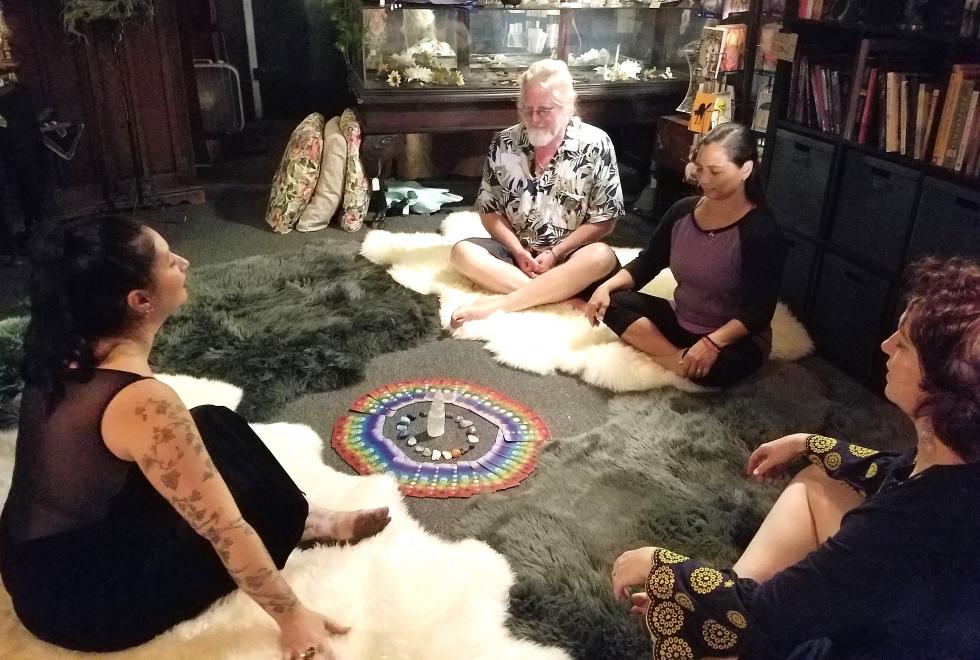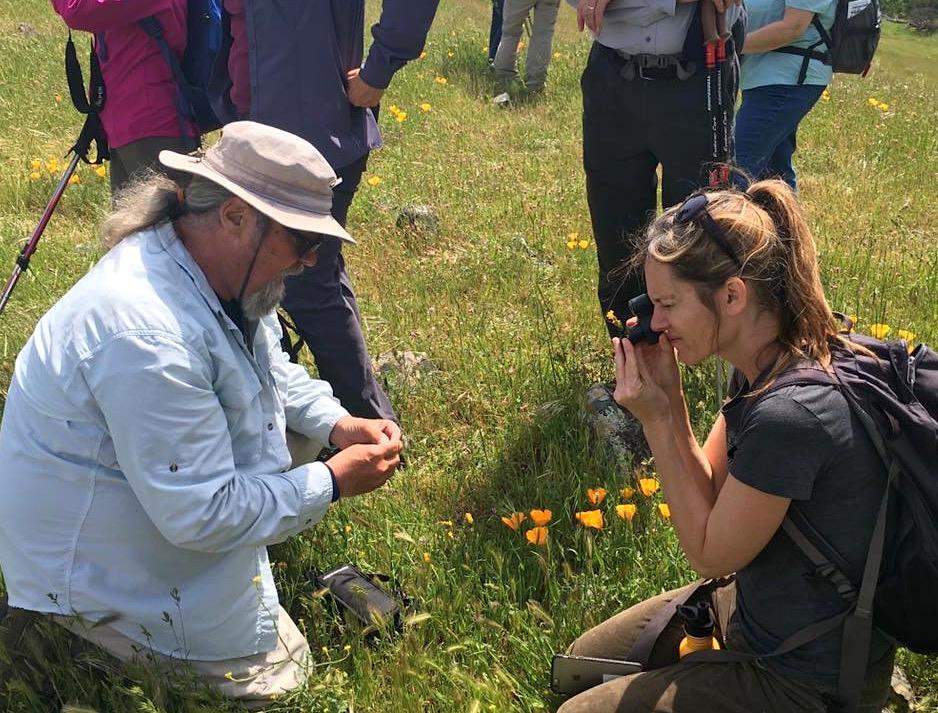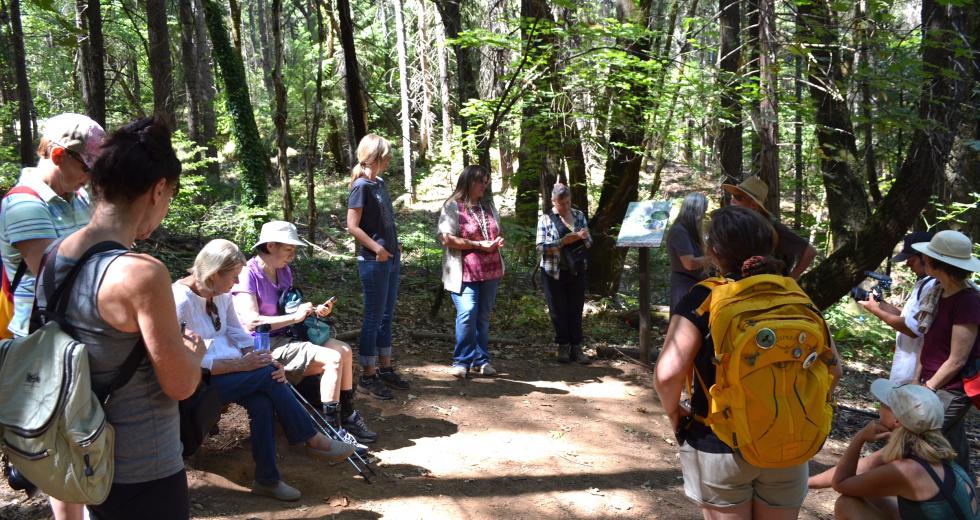For a typical day trip to Nevada County, a tourist might visit a few wineries, do some window shopping and then call it a day. But when Robert X Trent launched Outlandish Experiences in August, he wanted to use unique, unforgettable experiences to help visitors fall in love with the area he’s called home for 20 years.
That might mean taking a supernatural storytelling tour in Grass Valley’s historic downtown, or enjoying an “Indigenous Walk” along Deer Creek while hearing stories from a Nisenan tribe member. Or perhaps taking the opportunity to clear your chakras and meditate with crystals with a host from the Cult of Gemini, a local gift shop.
“I’ve traveled to more than 20 countries,” says Trent, who moved from the Bay Area to Nevada City to raise his family. “I love getting to see the real place I’m visiting and I find that meeting locals, hiring a guide and getting the behind-the-scenes look is the way to go.”
Trent, a small business advocate and former director of the Nevada County Economic Resource Council, has built an online platform that connects visitors to local residents offering guided adventures in Nevada City and Grass Valley. He has recruited guides who offer interesting experiences — from tame to outlandish, designated by the website’s flame icons — that showcase the more unconventional side of an area that’s home to artists, foodies, musicians, healing arts practitioners, outdoor guides, farmers, spiritualists, writers, poets and professional thrill seekers.
“Nevada County is a different culture you’re not going to find anywhere else,” says Laura Petersen, an Outlandish Experiences hiking guide who leads a 3-mile walk and talk along the Deer Creek Tribute Trail with her hiking guide partner Shelly Covert, spokesperson for the Nevada City Rancheria Nisenan Tribe. “We have a mix of artists, musicians, renaissance people, back-to-the-landers — we’re an enclave of people who think outside the box.”
Guests participating in “Chakra Healing,” which is an adventure
offered on the Outlandish Experiences platform. (Photo courtesy
Robert X Trent)

Petersen started her own guided hiking business, Hiking for Good, in July and found Trent’s platform valuable for connecting with more clients and providing her fledgling business with much-needed infrastructure.
“Outlandish Experiences is allowing me to test the waters and see if there’s an interest without losing out on anything,” Petersen says. “I haven’t invested a bunch of money for insurance — Robert offers it to all of the guides — and I don’t have a website yet, so having a platform that’s already established made it easier for me to get into the game.”
Outlandish Experiences’ structure means that Nevada City and Grass Valley residents can make money doing what they love, while contributing to the area’s overall “economic ecosystem,” Trent says, through the platform’s affiliate program, which allows local businesses like hotels, Airbnbs and entertainment venues to earn 10 percent of each experience when they refer clients through a special online link.
“The affiliate program helps locals upsell and find an extra revenue stream and keeps that money local,” Trent says. “By going directly to the people who are connected to the customers and giving them a cut of the action, we’re creating an economic ecosystem.”
Related: Getting Personal
Related: Why We Need to Build the Epic Trail
The focus on the local economy became especially important after last year’s announcement that Nevada City and Grass Valley had been jointly designated a California Cultural District through the California Arts Council. As outlined by the program, a Cultural District is a well-defined geographic area with a high concentration of cultural resources and activities. Each of the 14 districts chosen receives the designation for a period of five years as a way to highlight “thriving cultural diversity and unique artistic identities within local communities across California.”
“A cultural district in a rural landscape faces unique challenges,” says Eliza Tudor, executive director of the Nevada County Arts Council. “We don’t have the resources, like manifold funding sources and public policy around the arts, that many urban cultural districts have. But receiving this designation — the only twin cities in California to do so — gives us a sense of integrity and helps us self-identify as a unique environment. It also supports our cultural planning process, inspiring us to be thoughtful and proactive about what our future looks like and take responsible, community-oriented steps for our growth.”
One of the key aspects of applying for the designation was identifying the cultural assets that set Nevada City and Grass Valley apart, which includes the area’s numerous arts organizations along with diverse cultural offerings like integrated walking trails, the Yuba River and a growing wine industry. Tudor says businesses like Outlandish Experiences helps the area better capitalize on this abundance of opportunity.
Guests on the “Indigenous Walk” on Deer Creer, which is a guided
adventure offered on Outlandish Experiences. (Photo courtesy
Arrow Flora)

“In rural landscapes, culture becomes a very interesting subject because it’s contextual,” Tudor says. “What does culture mean to us? How does that definition differ from more urban and suburban areas? This is where Robert Trent fits in. We’re finding that small, creative businesses like Outlandish Experiences that are using innovative models to aggregate existing cultural assets and resources are helping existing artists and creative providers think about how they present what they do to make the world recognize this extraordinary place.”
Trent hopes the platform will grow (it currently offers nine different tours) and help areas beyond Nevada County gain recognition, as well. He is working out the kinks with the goal to eventually spread the offerings to other small, culturally diverse towns.
“Working with guides to offer interesting experiences that reflect what they love means that visitors can get a true sense of what the place is about,” he says. “‘I came up to the mountains and learned how to start a fire’ sounds much better to me than bringing home a vase or getting a great Instagram shot. Visitors connecting with locals — people connecting with people — is the key.”



